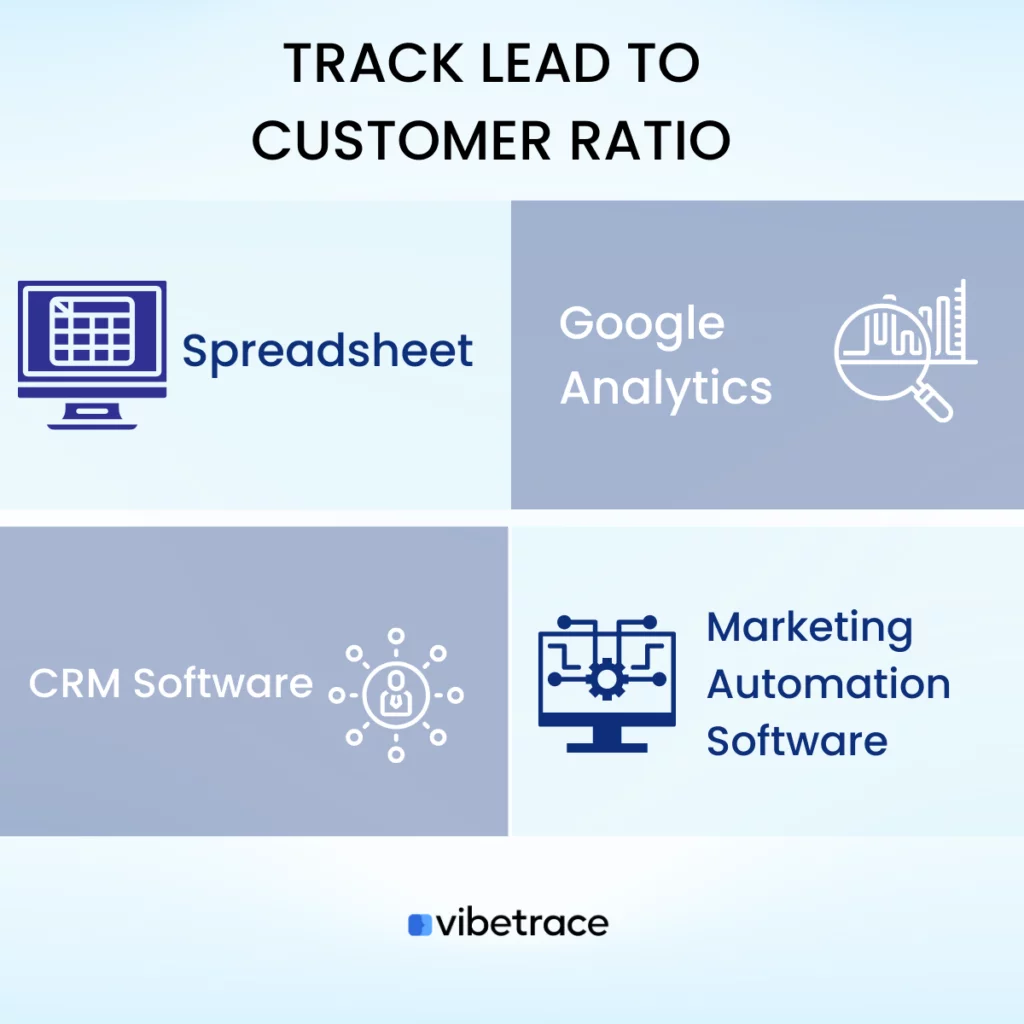The lead to customer ratio, also known as the sales conversion rate, is a crucial metric for any business that wants to succeed in today’s competitive market.
This ratio measures how effectively a company can transform its website visitors or potential clients into paying customers. This way you can increase conversion rates.
It’s no secret that most businesses require strong marketing tactics to convert qualified leads into customers.
However, achieving this goal is not as easy as it may seem. It often requires a multi-channel approach to reach the target audience and effectively communicate the company’s message.
So in order to evaluate marketing performance, tracking the lead to customer ratio is one of the most important metrics to consider.
What is Lead to Customer Ratio?
Definition of Lead to Customer Ratio
Lead to customer ratio, also known as sales conversion rate, is a metric used to measure how many potential customers, or leads, a business is able to convert into paying customers.
The lead to customer ratio is an important metric because it can help businesses determine the effectiveness of sales and marketing efforts.
As for the analysis of this metric, a high ratio could mean that your business is doing a good job of converting leads into customers, while a low ratio may indicate that the business needs to improve its sales and marketing tactics.
Understanding the lead to customer ratio can help you make data-driven decisions to improve your sales and marketing efforts and ultimately drive growth and success.
Lead to Customer Ratio Formula
The formula for Lead to Customer Ratio is:

For example, if your business generated 100 leads in a month and 20 of those leads became paying customers, your lead to customer ratio would be:
Lead to Customer Ratio = 20 / 100 = 0.2 or 20%
This means that your business was able to convert 20% of its leads into paying customers during that month.
How to track Lead to Customer Ratio?
Tracking the lead to customer ratio can also help you identify which marketing channels are most effective at generating high-quality leads and which channels may need to be adjusted or eliminated.
So to track this metric, there are several tools available to track Lead to Customer Ratio, ranging from basic spreadsheets to more advanced customer relationship management (CRM) software. Here are some options to consider:

Spreadsheet: You can create a simple spreadsheet to track the number of leads generated and the number of customers acquired over a specific period of time. Simply follow the formula by dividing the number of leads by the number of customers to calculate the Lead to Customer Ratio.
Google Analytics: If your company has a website, you can use Google Analytics to track the number of website visitors, leads generated, and customers acquired. This is easy and free! The data which you can track will be used to calculate the Lead to Customer Ratio.
CRM Software: A CRM system such as HubSpot, Salesforce, or Zoho can track leads and customers in a centralized database. Investing in this kind of system will be worth it in the long run to keep all your data organized. In fact, these systems can also provide insights into the effectiveness of your sales and marketing efforts, allowing you to identify areas for improvement.
Marketing Automation Software: Tools like Marketo or Pardot can help automate your lead generation efforts and provide insights into the effectiveness of your campaigns. These platforms often integrate with CRM software to provide a complete view of your lead-to-customer conversion funnel.
No matter which tool you choose, it’s important to regularly track your Lead to Customer Ratio and use this metric to inform your sales and marketing strategies.
Want to be up to date with Marketing?
Subscribe to our Retail CX newsletter!

Stay connected with what’s really important to optimize your digital revenues.
By clicking the button, you accept our Terms & Conditions. Also you will need to confirm your email address.
How often should you check Lead to Customer Ratio?
The frequency at which you should check your Lead to Customer Ratio may depend on various factors such as the nature of your business, the volume of leads you generate, and the frequency of customer conversions. However, as a general rule of thumb, it’s a good idea to check your Lead to Customer Ratio on a regular basis, such as monthly or quarterly.
Regularly monitoring your Lead to Customer Ratio can help you identify trends and patterns in customer behavior and make informed decisions about your marketing and sales strategies.
If you notice a decline in your Lead to Customer Ratio over time, it may indicate that your marketing efforts are not generating enough qualified leads or that your sales process needs improvement.
On the other hand, if your Lead to Customer Ratio is consistently high, it may suggest that your marketing efforts are effective in attracting and engaging potential customers, but your sales process may need to be streamlined to convert more leads into customers.
Lead to Customer Ratio Calculator
Do you want to calculate your lead to customer ratio? Use our simple calculator below.
Simple Lead to Customer Rate Calculator
Visitors:
Customers:
Lead to Customer Rate
= ?
Important Things about Lead to Customer Ratio
Here are some important things to know about lead to customer ratio, also known as the sales conversion rate:
Provides insight of marketing results: It is a crucial metric for any business that wants to measure the effectiveness of its sales and marketing efforts in converting leads into paying customers. You must understand that lead to customer ratio shows the people you have converted who have already been eyeing on your business when they subscribed to your mailing list, checked your website, and even signed up.
Interpreted by high or low ratio: A high lead to customer ratio indicates that a business is doing a good job of converting leads into paying customers, while a low ratio may indicate that the business needs to improve its sales and marketing tactics.
Indicates the well-performing channels: Tracking the lead to customer ratio can help businesses identify which marketing channels are most effective at generating high-quality leads and which channels may need to be adjusted or eliminated.
Helps increase revenue and growth: Improving the lead to customer ratio can lead to increased revenue and growth for your business. It is important to track this metric over time to identify trends and make data-driven decisions to improve the overall performance of the business.
Metrics related to Lead to Customer Ratio
There are several metrics related to lead to customer ratio that you can use to measure the effectiveness of your sales and marketing efforts. Here are a few important ones:
Customer Acquisition Cost
The cost of acquiring a new customer, including marketing and sales expenses.
Customer Lifetime Value
The estimated total value of a customer to a business over the course of their lifetime
Return on Marketing Investment
The return on investment in a marketing or advertising campaign
Gross Margin
Indicates if the business is generating a high-profit margin on its products.
Revenue per Visitor
The amount of revenue generated by each visitor to the website.
If you need help with this metric, Vibetrace is here to help you!
Vibetrace is an email marketing automation platform that can help you with lead to customer ratio by providing various tools and features to help you attract, engage, and convert leads into customers.
Additionally, it allows you to test different email campaigns and messages to see which ones perform better. By testing and optimizing your email campaigns, you can improve your sales conversion rate over time.
Start boosting your sales with Vibetrace today!

